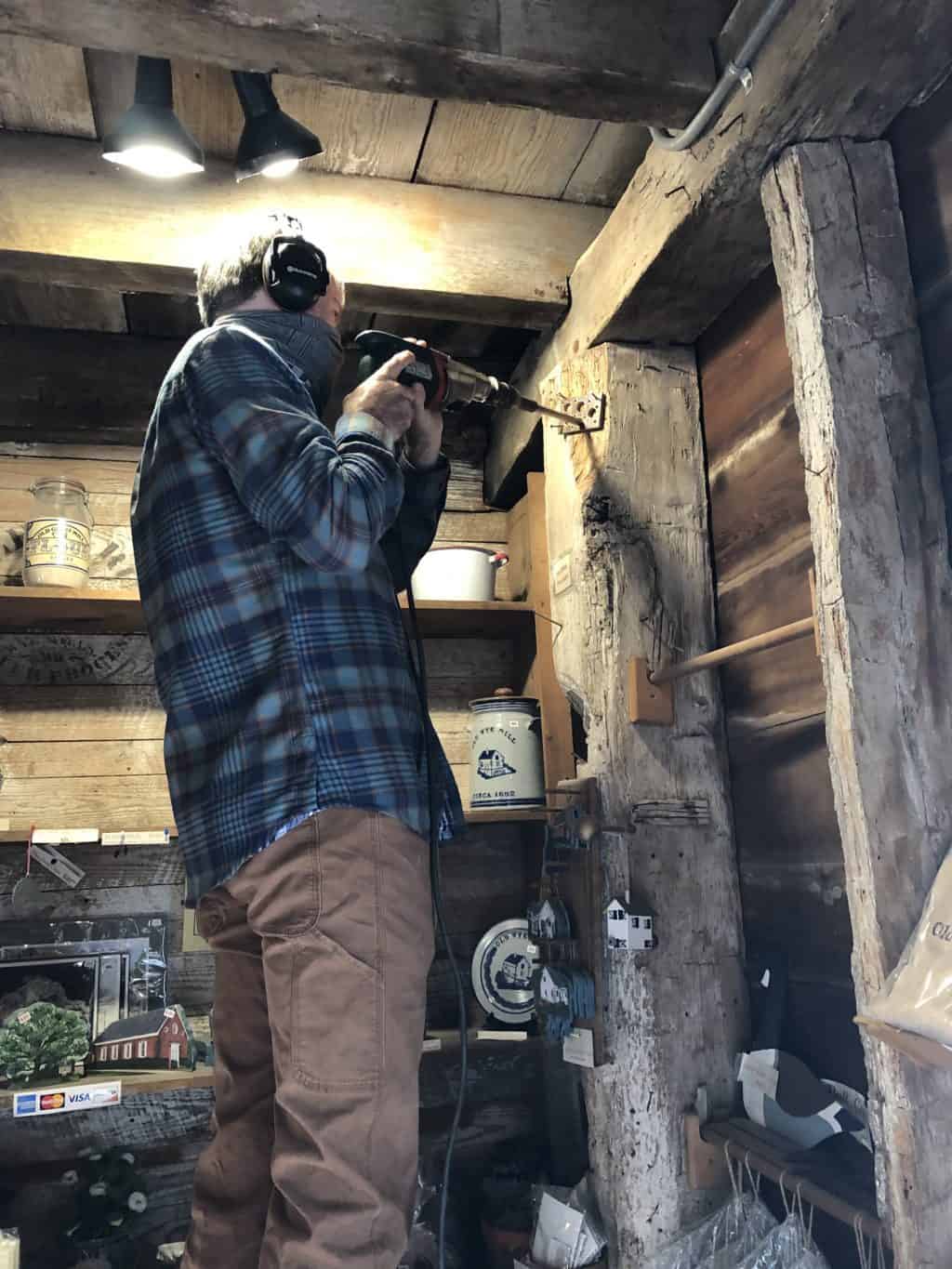Remember counting the rings in a tree stump to guess its age? That same concept has just been used to determine the age of a historic building at Old Wye Mill—dating it to the winter of 1753–1754.
Old Wye Mill, in the Wye rivershed on Maryland’s Eastern Shore, lives up to its name. It is the oldest continuously operating water-powered mill in America, and Maryland’s oldest continuously operating business of any trade. Evidence shows a mill on the site has been grinding grain since the 1600s.
But the folks at Old Wye Mill (OWM) didn’t know just how old the structural timbers in the existing mill were, nor the wooden components of the milling equipment. They commissioned the Oxford Tree-Ring Laboratory to conduct a study to find out. Dendrochronology is the science of dating events or artifacts using the characteristic patterns of annual growth rings in tree trunks. The study was funded by the Maryland Heritage Areas Authority through the Stories of the Chesapeake Heritage Area.
The Oxford Tree-Ring Laboratory took samples of 12 white oak structural timbers under the supervision of the Maryland Historic Trust.
Oxford determined most of the structural timbers were harvested in the 1750s, and some of the milling equipment dates to 1841. Incredibly, OWM still operates equipment dating from about 1790–1810, invented (and possibly installed) by Oliver Evans, a pioneer of industrial engineering.
“Old Wye Mill is a fascinating example of vernacular industrial architecture of the mid-1700s,” said Michael Worthington, co-author of the study with Jane Seiter, “and its wooden framing has now revealed new information about the building’s construction.”
In addition to the wood structures, there is a roller mill on the grinding floor for making refined white flour installed by Winthrop Blakeslee, the last commercial miller, around 1918.
The study’s findings will be part of the mill’s historical interpretation when it reopens to the public on May 1, 2021. It has been closed for the past year due to the pandemic. For updated hours and admission information upon its reopening, go to oldwyemill.org.
-Meg Walburn Viviano




